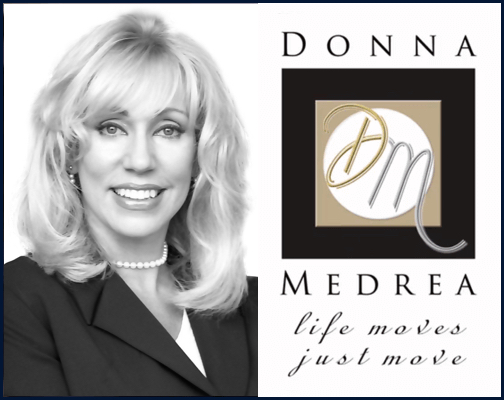HOMES PRICES ROSE IN JANUARY
CoreLogic recently released its January 2015 CoreLogic Home Price Index (HPI) which shows that home prices nationwide, including distressed sales, increased 5.7 percent in January 2015 compared with January 2014. This change represents 35 months of consecutive year-over-year increases in home prices nationally. On a month-over-month basis, home prices nationwide, including distressed sales, increased 1.1 percent in January 2015 compared with December 2014.
The CoreLogic HPI Forecast indicates that home prices, including distressed sales, are projected to increase 0.4 percent month over month from January 2015 to February 2015 and, on a year-over-year basis, by 5.3 percent from January 2015 to January 2016. Excluding distressed sales, home prices are expected to increase 0.3 percent month over month from January 2015 to February 2015 and by 4.9 percent year over year from January 2015 to January 2016. The CoreLogic HPI Forecast is a monthly projection of home prices using the CoreLogic HPI and other economic variables. Values are derived from state-level forecasts by weighting indices according to the number of owner-occupied households for each state.
AMERICANS STILL YEARN FOR LARGER HOMES
A Trulia housing study found that 43 percent of survey respondents would prefer to live in a larger home. Only 40 percent of Americans are satisfied with the size of their current house, while only 16 percent would prefer to downsize.
However, attitudes differ by age. While most would think that baby boomers are most likely to downsize, the survey found that 26 percent want a larger home. More than half (53 percent) said they’re already living in their ideally sized home, and 21 percent would prefer to downsize.
When asked if they prefer larger or smaller homes, more than 60 percent of millennials said their ideal residence is larger than where they live now – the largest proportion among all generations
By contrast, slightly more than 13 percent of millennials said they would rather have a smaller home than their existing one – which is also the smallest among the survey sample. Millennials are much more likely to want to upsize than downsize.
FANNIE MAE FORECASTS STRONG JOB GROWTH TO BOOST ECONOMY
Fannie Mae predicts the economy to pickup in growth in 2015 amid strengthening employment growth, rising incomes, and declining commodity prices. Fannie Mae’s forecast calls for an increase in economic growth to 2.9 percent for 2015, which is a slight downward adjustment from its prior forecast but solid improvement nonetheless. While this year is beginning at a more modest pace compared with above-trend numbers seen at mid-year 2014, the country’s aggregate income has benefitted from the improving labor market, which, combined with low gasoline prices, should help drive higher auto sales and overall consumer spending throughout 2015, says Fannie Mae.
“We expect housing to shift up a gear in 2015 following the uneven and ultimately disappointing activity last year,” said Fannie Mae Chief Economist Doug Duncan. “Our forecast calls for a number of factors, including strong hiring and income growth, stabilized housing affordability, and modestly easing lending standards, to translate into improving housing demand throughout the year. We continue to anticipate that the Fed will begin to hike short-term interest rates later this year, although weak global economic growth and geopolitical headwinds will likely limit the rise in long-term interest rates. We expect total home sales to increase by approximately 6.0 percent for 2015, with total single-family mortgage production climbing to approximately $1.2 trillion.”
REPORT FINDS WHICH HOMEOWNERS PAY THE HIGHEST PROPERTY TAX RATES
RealtyTrac recently released its inaugural U.S. Property Tax Rates Report for 2014, which provides average property taxes and effective property tax rates for single family homes in more than 1,000 counties nationwide as well as by state and metropolitan statistical area. The report also provides a breakdown of average property taxes in 2014 and effective property tax rates – which is the average property taxes for single family homes in 2014 divided by the average estimated value of single family homes as of the end of 2014 – by number of years owned and by property value range.
Highlights from the report:
- Owners of very high end and very low end homes pay the highest property tax rates. Nationwide, the average effective property tax rate for all single-family homes in 2014 was 1.29 percent, but the average effective property tax rate was 1.68 percent for homes valued $50,000 or below and 1.40 percent on homes valued between $50,000 and $100,000. Meanwhile the average effective property tax rate was 1.56 percent on homes valued $1 million to $2 million and 1.77 percent for homes valued $2 million to $5 million.
- The report found that homeowners who have owned a home for five to 15 years had the highest effective property tax rates while those who have owned more than 20 years had the lowest effective property tax rates. The average effective property tax rate was 1.35 percent for homeowners who have owned between 10 and 15 years, and it was 1.34 percent for homeowners who have owned between 5 and 10 years. Meanwhile, the average effective property tax rate was 1.18 percent for homeowners who have owned less than 1 year, and it was 1.15 percent for homeowners who have owned more than 20 years.
- Single-family homes valued at more than $300,000 accounted for 25 percent of all single-family homes nationwide, but the property taxes paid on those homes account for 54 percent of all property taxes paid nationwide.
- Single-family homes values up to $300,000 accounted for 75 percent of all single-family homes but 46 percent of the total property taxes paid nationwide.

